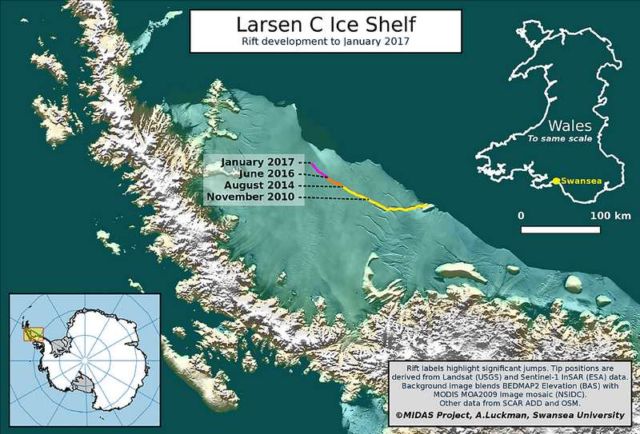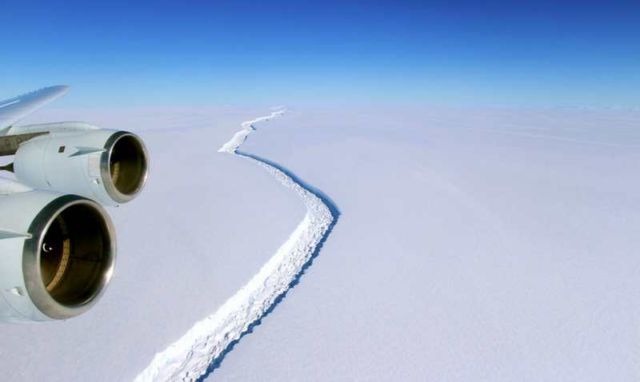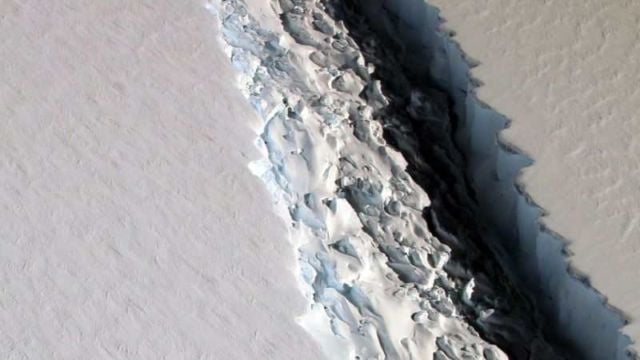This past December, the crack grew substantially on the giant rift in Antarctica’s Larsen C Ice shelf.
The about 350m thick Larsen C Ice shelf in Antarctica, is primed to shed an area of more than 5000 sq. km following further substantial rift growth.
Above, rift in the Larsen C ice shelf as seen on November 10, 2016. Credit NASA/John Sonntag
 The current location of the rift on Larsen C. Labels highlight significant jumps. Tip positions are derived from Landsat (USGS) and Sentinel-1 InSAR (ESA) data. Background image blends BEDMAP2 Elevation (BAS) with MODIS MOA2009 Image mosaic (NSIDC). Other data from SCAR ADD and OSM.
The current location of the rift on Larsen C. Labels highlight significant jumps. Tip positions are derived from Landsat (USGS) and Sentinel-1 InSAR (ESA) data. Background image blends BEDMAP2 Elevation (BAS) with MODIS MOA2009 Image mosaic (NSIDC). Other data from SCAR ADD and OSM.
After a few months of steady, incremental advance since the last event, the rift grew suddenly by a further 18 km during the second half of December 2016.
Only a final 20 km of ice now connects an iceberg one quarter the size of Wales to its parent ice shelf.
When it calves, the Ice Shelf will lose more than 10% of its area to leave the ice front at its most retreated position ever recorded. This event will fundamentally change the landscape of the Antarctic Peninsula.
Rift in the Larsen C ice shelf as seen on November 10, 2016. Credit NASA/John Sonntag
via BBC
source Projec MIDAS







Leave A Comment